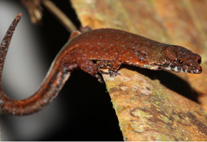Abstract
The spider genus Hahnia C.L. Koch 1841, which includes 94 species in the world (World Spider Catalog 2015), is the largest group of the comb-tailed spider family, Hahniidae Bertkau 1878. However, this genus appears to be polyphyletic. For example, H. xinjiangensis Wang & Liang 1989 (Wang & Liang 1989: 52, figs 1–6) and H. talei (Gertsch 1934) (Gertsch 1934: 13, figs 5–8, 27–28) exhibit patterns of their copulatory organs that differ from those of the type species H. pusilla C.L. Koch 1841 and other allied species, H. helveola Simon 1875 and H. ononidum Simon 1875 etc. (Almquist 2005: figs 258a–e, 261a–e, 262a–f). Hahnia s. str. has an equidistant tracheal spiracle between the epigastric furrow and the base of spinnerets, a hook-like patellar apophysis, a long and curved tibial apophysis, a threadlike embolus, a membranous median apophysis and a retrolateral cymbial furrow and tube-like and curved copulatory ducts and two epigynal bursae (spermathecae and subspermathecae, see Zhang et al. 2011).

